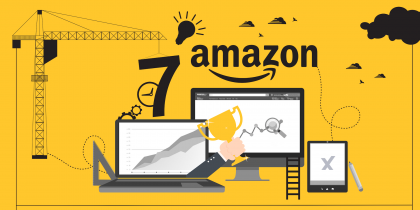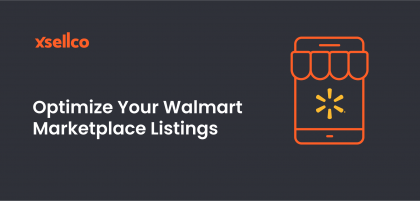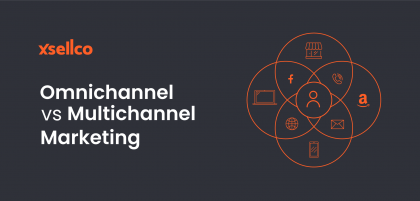By Guest Contributor Aimee Goodsall for Linnworks.
As an online retailer, it’s extremely likely that you will be looking to maximise the growth of your business, in what is undeniably an increasingly competitive landscape. In order to successfully grow your business, however, you will realistically need to expand your reach by selling across a range of channels.
Fortunately, despite the competition, there are significant opportunities available to you to take your eCommerce business to the next level. With this in mind, here are four key considerations you should take into account, in order to grow your own multichannel empire.
1. Selecting the right channels for your business
Deciding on which channels to sell on is one of the first steps in growing your business, and it isn’t a decision that should be taken lightly. Here we have compiled some information about four of the most common sales channels, and outline some key considerations that you should take into account when researching your options.
Marketplaces
Let’s face it, there are a whole host of marketplaces available to sell on, and because of this there are plenty of factors that will need to be taken into account, from marketplace traffic and fee structure, right through to merchant support and rules & regulations.
Many small businesses start by selling on Amazon or eBay, but there are also plenty of niche marketplaces to choose from, depending on your industry. Regardless of which marketplace(s) you choose to sell on, however, there are some huge benefits which include the fact they are generally fairly easy to get set up on, not to mention the access you will have to a ready-to-buy customer base.
As with anything, there are indeed downsides that come with marketplace selling, including rules and regulations, potentially hefty marketplace fees, and the fact you will likely have little control over your store, specifically with regards to branding, design and messaging.
Webstore
Again, you might already have your own website which is great, but if you have started your business by going down the marketplace or brick-and-mortar store route, there are certain things you will need to bear in mind before setting up a webstore.
The reality is, having your own website is something that will become all the more important as you grow your business. The first decision you will need to make is whether to use an ‘out of the box website builder’ that provides all the tools for designing and managing your site, or alternatively an ‘open-source self-hosted website’ which will give you more control and will better scale with the growth of your business. If the former sounds more in-line with your business needs, then a solution such as Shopify or BigCommerce could be an ideal fit, however if you have some technical knowledge and wish to have more flexibility with your website, then you should consider a solution such as Magento or WooCommerce.
Do bear in mind though that whichever option you decide to go with, creating and managing an eCommerce site requires significant time and attention, as you will be responsible for everything including; site design, website maintenance, marketing to raise brand awareness and drive traffic to the site, shipping and fulfilment of orders, payment and finally customer service. For this reason, you should ensure that you have the resources available to effectively manage these prior to setting up your own eCommerce site.
Brick and Mortar Store
If you’re a small start-up business, then the idea of setting up a physical storefront probably won’t be something you’ll be thinking about straight away, but there’s a good chance it will feature in your future growth plans.
Taking your business from being solely an online venture to a brick-and-mortar store, however, is arguably one of the most challenging transitions, as it requires an entirely different approach and considerations including, but not limited to, commercial space, inventory, overhead costs and staff. That said, it is increasingly common for eCommerce brands to expand into the high street, and if this is something you’re considering, we would strongly advise that you avoid jumping head first. In other words, start by opening one store, not five.
Social Selling Channels
Perhaps one of the less obvious channels are those on social media. If you’ve not yet heard of social commerce, it’s where retailers are using social media to sell to customers, directly from the social media platforms. This increasingly popular way of selling provides merchants with a way to reach new customers, and improve the user experience by allowing them to purchase directly from the social media platform.
As an example, solutions such as Shopify enable you to set up a store on Facebook, and allow your customers to purchase your products without leaving the site, while they handle the payment processing and transaction tracking.
2. Ensuring your business is scalable
Evolving from a small start-up to an established brand is no small task, and rapid growth can have significant implications if you aren’t scaling your company effectively.
What we mean by this is that you will need to have a structure in place to grow your business and significantly reduce the risk of failure. Manually handling your day-to-day business processes is all well and good when you’re only selling on Amazon, but once you start expanding your product offering onto eBay and your own website, for example, it’s just not that practical.
With the use of an order and inventory management system that has the capability to scale with your business, you can bring in the data from all of your selling channels, and manage your entire business from a single screen, saving you time, money and your sanity.
3. Offering outstanding customer service
Your brand’s reputation can make or break your business, and this is something that becomes even more important as you grow.
Specifically, one of the biggest challenges that companies tend to face when growing their business across channels, is that it becomes more difficult to maintain customer satisfaction and handle queries and complaints. This comes down to a number of reasons, including the fact that you’re dealing with a larger pool of customers and often don’t have the time to respond quickly to these queries.
There are, however, tools available to you that can help you handle them quickly and effectively. A solution such as xSellco Fusion can help you manage your support from multiple marketplaces, in-turn improving customer satisfaction.
4. Real-time integration
The key to an effective multichannel selling strategy is seamless and real-time integration, after all, if your selling channels operate in isolation, you risk human-error such as overselling stock.
The fact is, the bigger your business grows and the more channels you choose to sell on, the more important it is to have a system in place that integrates each of these channels, and allows you to manage all of your business operations from one screen.
Think about the alternative; Selling on four different platforms and having to manually go into each channel to manage orders, inventory levels and shipping. Chances are it would take up most, if not all, of your time and even if this seems bearable, mistakes can still be unavoidable. Let’s say two orders of the same product are made on two different channels in a similar time-frame, but you only have one of that item in stock. In this instance it won’t matter how efficient you are, because there’s a good chance that both sales will be made before the stock levels have been manually updated. This then leads to having to deal with customer disappointment and a potentially damaged reputation.
With an inventory management solution such as Linnworks, you are not only able to control your business from a single dashboard, but you can also be assured that all of your selling channels will synchronised in real time, saving you time and money, while significantly reducing human-error.
To find out more about Linnworks, head to https://linn.works/1spQiJN. Or, to learn more about multichannel selling and how it can benefit your business, make sure you check out the Linnworks blog at blog.linnworks.com.








